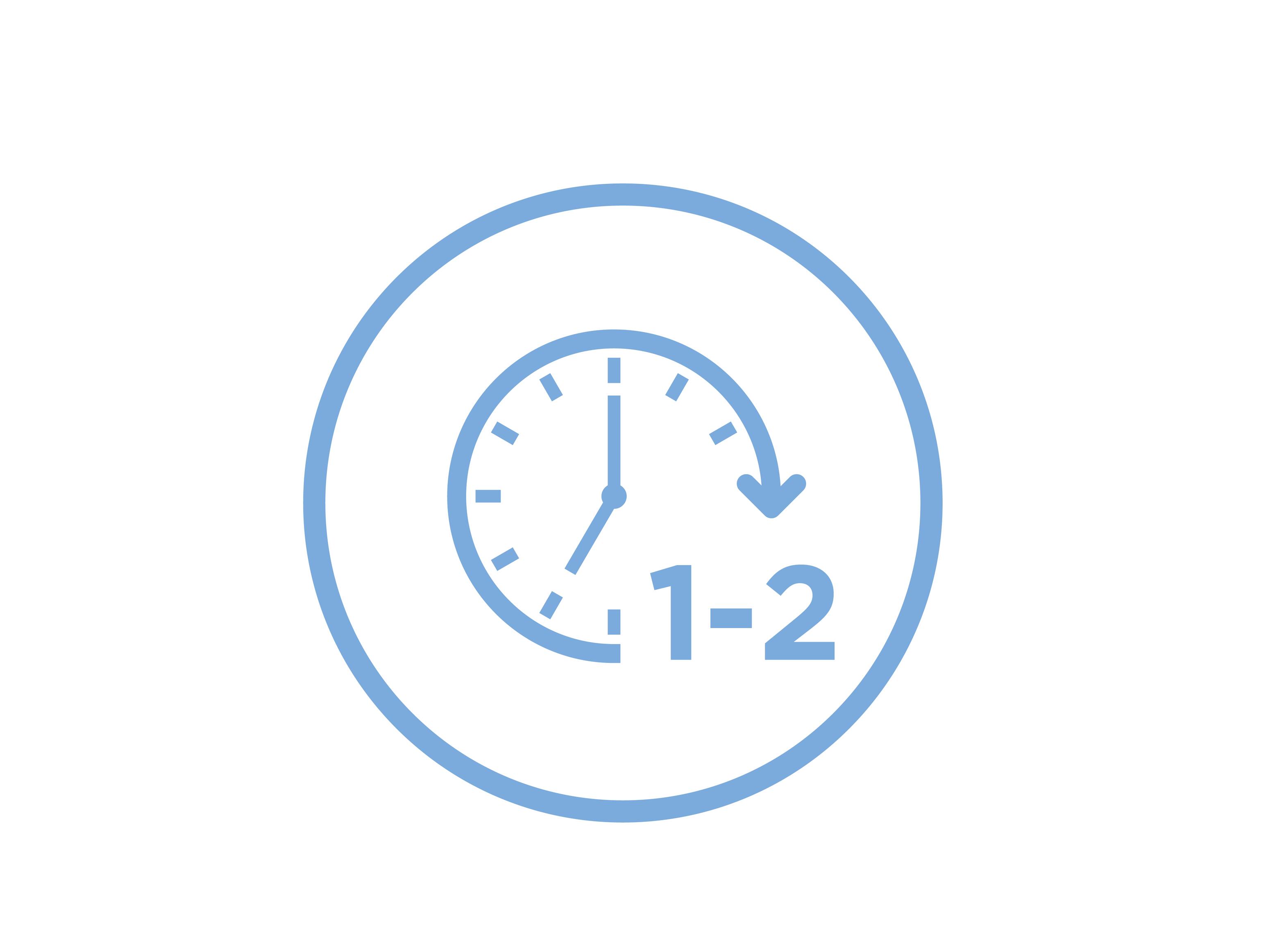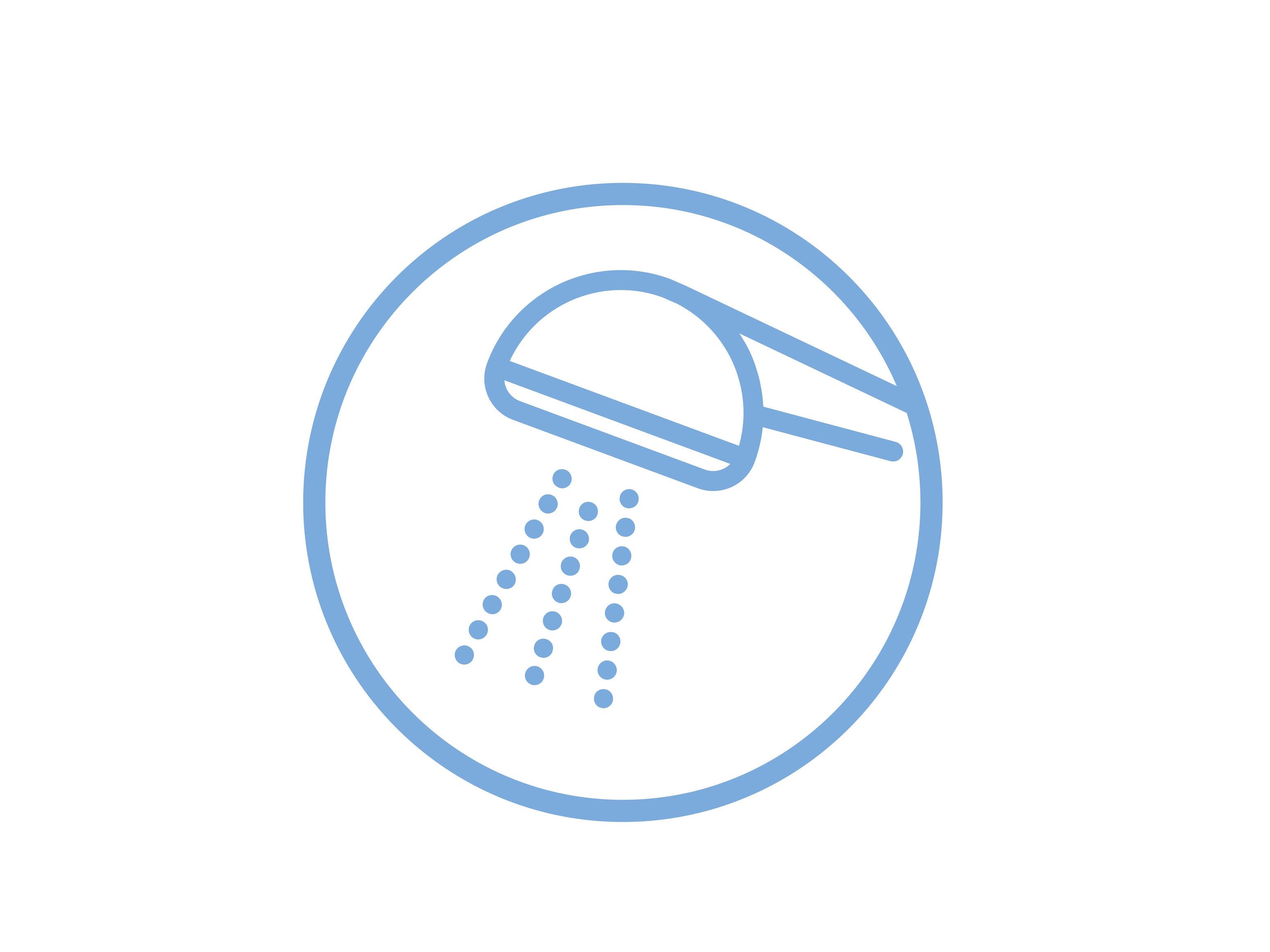Acne in adolescents: causes, treatments and dermatological advice
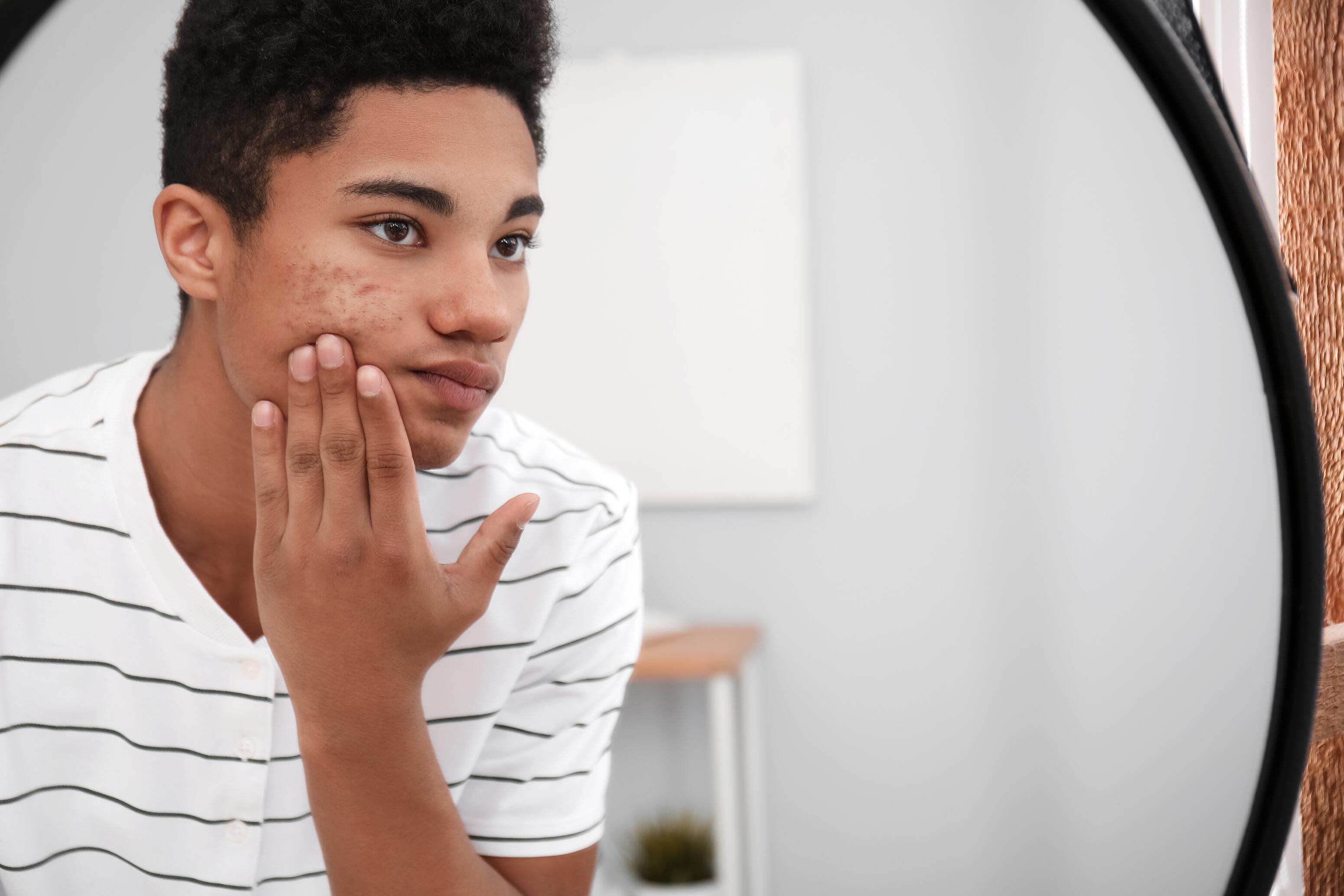
Summary
Introduction to adolescent acne¹ ² ³
Acne is a common chronic skin condition affecting teenagers and young adults. In France, nearly 6 million people suffer from it, 80% of whom are aged 12 to 20. Within this group, 15 to 20% have a severe form that often requires targeted care. When correctly managed, adolescent acne usually clears within three to four years, although it can sometimes persist into adulthood.
The disease begins when the pores become clogged by an excessive, often thicker production of sebum and by dead skin cells, triggering inflammation of the pilosebaceous follicle. This blockage encourages the proliferation of Cutibacterium acnes, the bacterium responsible for acne lesions.
Symptoms include comedones (blackheads and whiteheads), papules (red spots), pustules (spots containing pus) and, in more severe cases, nodules or inflammatory cysts that may leave scars. The face is affected in 95% of cases, followed by the back (43 %), neck (20 %) and chest (20 %). Beyond the physical signs, acne has a marked influence on self‑image and social interaction during adolescence, a critical stage of personal development. Effective care, therefore, extends beyond the medical aspect to encompass psychological well‑being and quality of life.
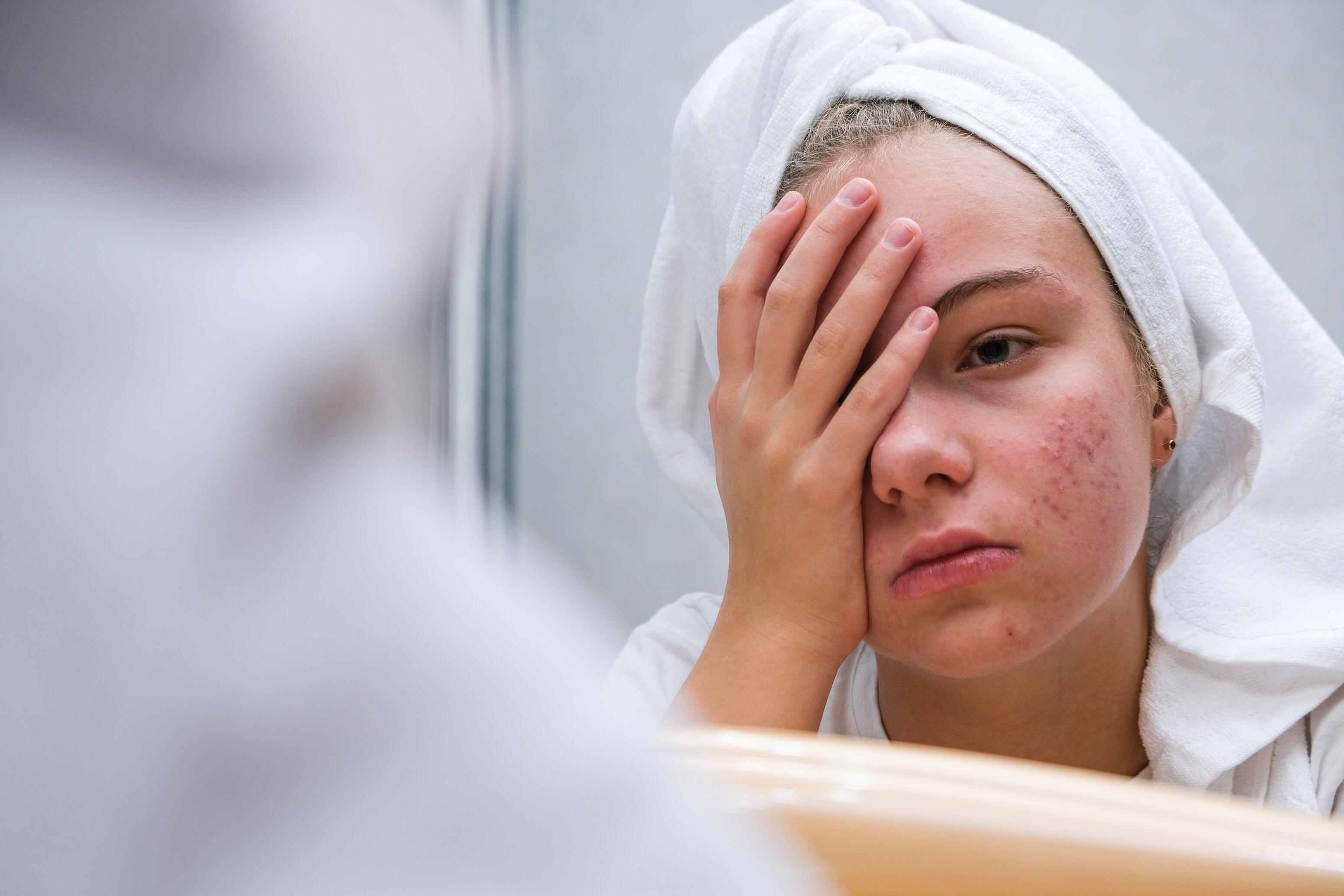
Understanding the causes and contributing factors of adolescent acne¹ ² ³
Key mechanisms in acne formation
Adolescent acne develops when androgen hormones stimulate excessive sebum production, leaving the skin greasy and pores blocked. The overgrowth of Cutibacterium acnes in these clogged follicles triggers an immune response and inflammation, producing papules and pustules. If pressure builds up, the follicle can rupture into the dermis, causing deeper lesions such as nodules, which risk scarring.
Hormonal factors
Hormones play a central role, particularly at puberty. Rising androgen levels in both boys and girls stimulate sebaceous glands to produce more sebum.
In girls, hormonal fluctuations also occur during the menstrual cycle, often worsening acne a few days before menstruation. Hormonal disorders such as polycystic ovary syndrome (PCOS) can further aggravate the condition.
Genetic role
Family history heavily influences the likelihood and severity of acne: an inherited tendency is linked to higher sebum production and greater follicular sensitivity.
Lifestyle and diet
Although evidence remains limited, diets rich in high‑glycaemic foods or dairy products may worsen acne, whereas a varied, balanced diet benefits skin health.
Psychological factors and stress
Stress can exacerbate acne by increasing sebum production via the neurotransmitter substance P and by encouraging manipulation of lesions, heightening inflammation.
Environmental and mechanical factors
Tight clothing, helmets or comedogenic cosmetics can obstruct pores and worsen acne.
Medicines and metabolic disorders
Some drugs, such as steroids or lithium, and metabolic imbalances can also trigger or worsen acne lesions.
Differences between acne in adolescent boys and girls¹ ² ⁴
In boys, acne tends to be more severe, with a stronger inflammatory component and deeper lesions such as nodules because higher androgen levels drive the sebaceous glands. Girls are more prone to persistent acne after adolescence, often linked to menstrual‑cycle fluctuations, and their lesions mainly affect the chin area. Male acne more frequently involves the back and chest. External factors such as unsuitable cosmetics or stress may play a larger role in girls, while shaving can aggravate acne in boys.
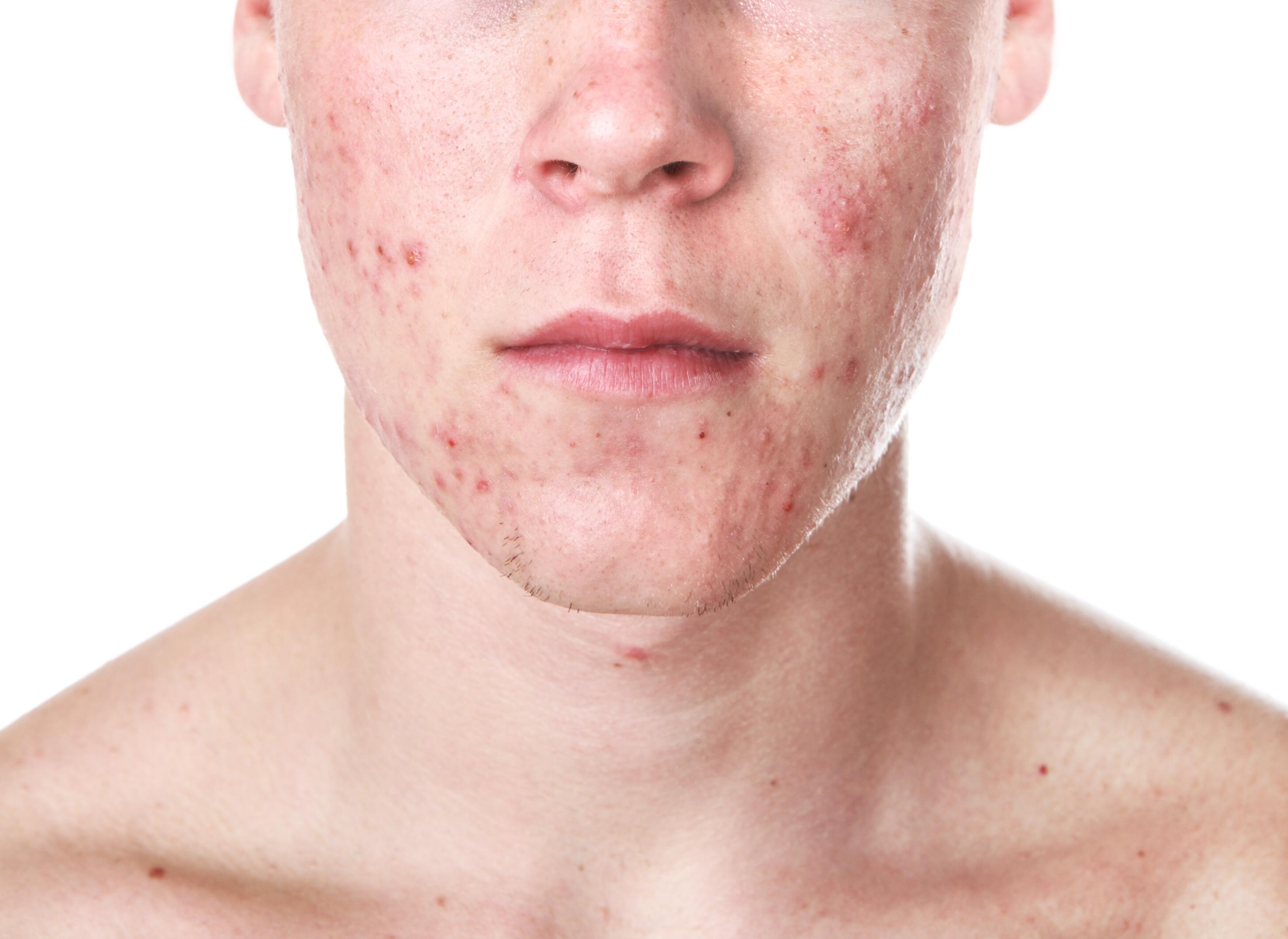
Forms and severity of adolescent acne¹ ² ³
Types of acne
- Retentional acne
Characterised by oily skin, enlarged pores, and both open comedones (blackheads) and closed comedones (whiteheads or micro‑cysts)caused by the buildup of sebum and dead skin cells inside hair follicles. - Inflammatory acne
When Cutibacterium acnes proliferates, it triggers inflammation:
If inflammation remains confined to the epidermis, it produces papules (red, non‑purulent spots) and pustules (red spots containing pus).
If it spreads into the dermis, deeper lesions appear: nodules (firm, dermal lesions) and cysts (large, painful, fluid‑filled lesions). In the most severe cases, nodules and cysts may progress to abscesses that require medical intervention. - Acne conglobata
This rare, severe nodulocystic form of acne affects extensive areas such as the face, back and shoulders, and can leave significant scars. - Acne fulminans
This extremely rare and severe type of acne chiefly affects young men. It features ulcerated nodules and systemic symptoms (fever, joint pain) and requires urgent medical care.
Grades of severity: the Investigator’s Global Assessment (IGA)
The IGA is a tool widely used in dermatology to grade acne severity based on the appearance of lesions.
Grade 0: clear skin: no visible active acne lesions.
Grade 1: almost clear acne: only a few comedones or papules/pustules; intensive treatment usually unnecessary.
Grade 2: mild acne: comedones with a few superficial inflammatory lesions (papules and pustules) scattered over the face.
Grade 3: moderate acne: numerous inflammatory lesions, including papules, pustules and a few shallow nodules, are visible in several facial areas.
Grade 4: severe acne: many inflammatory lesions (papules, pustules, nodules) covering most of the face, often with pronounced inflammation.
Treatment options for adolescent acne¹ ³ ⁵
Topical treatments
Topical therapy is usually the first line of acne management. It comprises creams, gels and lotions that contain active agents such as benzoyl peroxide, retinoids, azelaic acid or topical antibiotics. These products reduce inflammation, curb bacterial proliferation and prevent pores from becoming blocked. Their effectiveness is typically assessed after around two months of consistent use, with careful attention to how well the skin tolerates the treatment, especially any drying or irritating effects.
Oral treatments
Oral therapies are reserved for moderate‑to‑severe acne or disease resistant to topical regimens. Options include antibiotics and zinc supplements. In some instances, adolescent girls may be offered combined oestrogen–progestin or micro‑progestin hormonal treatments. Dermatologists can prescribe isotretinoin under strict medical supervision in the most severe situations.
Dermatological and surgical procedures
In some instances, interventional procedures are necessary, such as the extraction of micro‑cysts or the drainage of an inflamed cyst. Such measures help minimise the aesthetic and psychological impact of severe acne.
Choosing the proper treatment
Therapy is tailored to each patient, considering age, acne severity, psychological impact and previous treatments. A personalised approach maximises the chance of success while minimising side effects.

When should you see a dermatologist?⁶
Consult a specialist if:
- Acne persists despite well‑conducted treatment,
- Severe lesions (cysts, nodules, scars) develop,
- Signs of infection appear (marked redness, swelling, fever),
- Psychological distress is significant,
- Associated hormonal signs (irregular periods, excess body hair) suggest an underlying imbalance.
Early specialist care improves outcomes and reduces psychological impact.
Practical tips for managing acne day‑to‑day¹ ³ ⁶
Skin hygiene and care
Daily cleansing: Wash your face twice daily with a gentle, non‑irritating cleanser formulated for acne‑prone skin, and after any activity that makes you perspire.
- Appropriate hydration: Apply a non‑comedogenic moisturiser designed for oily or combination skin. This prevents dehydration and counters the drying side effects of some acne treatments.
- Product choice: Unless your dermatologist advises otherwise, avoid scrubs, abrasive masks and products containing alcohol or highly occlusive oils. Choose non‑comedogenic make‑up and remove it thoroughly every evening.
- Hair hygiene: Wash your hair regularly, especially if it is oily, to help prevent breakouts on the forehead.-
Twice a day
Non-comedogenic moisturizer
Avoid scrubs
Wash your hair
Environmental factors and lifestyle habits
- Adhere strictly to your medication: Changing treatments too often can irritate the skin and trigger flare‑ups. Give each therapy time to work; improvement may take several weeks to a few months.
- Hands off your face: Picking or frequently touching spots can worsen lesions and raise the risk of scarring.
- Sun protection: UV rays can aggravate acne, causing hyperpigmented marks and scars. The risk is higher if you use photosensitising treatments such as cyclines. Apply a sunscreen suitable for acne‑prone skin.
- Balanced diet: Favour fruit, vegetables and high‑fibre foods. Limit high‑glycaemic foods (refined sugars) and dairy products if they coincide with flare‑ups.
- Stop smoking: Tobacco impairs skin quality and can worsen acne.
- Stress management: Stress is aggravating; practice relaxation techniques and regular physical exercise.
Avoid touching the face
Sun protection
Balance diet
No smoking
Stress
Psychological impact of acne in adolescents⁷ ⁸
Effects on self‑image
Acne, particularly when it affects the face, can profoundly alter how adolescents see themselves. Young people are especially vulnerable during this pivotal stage, when physical appearance and social acceptance carry great weight. Low self‑esteem, a negative body image and withdrawal from social interactions are among the most frequent consequences, and they can arise even when acne is mild.
Support and guidance for teenagers
A comprehensive approach that combines dermatological treatment with psychological support is essential to lessen acne's psychological impact. Reassuring adolescents that acne is both common and temporary can ease anxiety. Encouraging open communication with parents, friends or healthcare professionals further boosts confidence. When acne causes severe or persistent emotional distress, referral to a psychologist or psychiatrist experienced in adolescent care may be necessary.
Sources
1. Jegou-Penouil MH. L’acné. Maladie du follicule pilo-sébacé. Société française de dermatologie. 2019 Dec. [Internet]. https://dermato-info.fr/fr/les-maladies-de-la-peau/l%E2%80%99acn%C3%A9
2. L’assurance maladie. Définition, symptômes et évolution de l’acné. Ameli.fr. 2024 May. [Internet]. https://www.ameli.fr/assure/sante/themes/acne/definition-symptomes-evolution
3. Sutaria AH and al. Acne Vulgaris. Treasure Island (FL): StatPearls Publishing; 2024 Jan. [Internet]. https://www.ncbi.nlm.nih.gov/books/NBK459173/
4. Preneau S, Dreno B. Female acne - a different subtype of teenager acne? J Eur Acad Dermatol Venereol. 2012 Mar;26(3):277-82.
5. L'assurance maladie. Le traitement de l’acné. Ameli.fr. 2024 May. [Internet]. https://www.ameli.fr/assure/sante/themes/acne/traitement
6. L'assurance maladie. Acné. Que faire et quand consulter. Ameli.fr. 2024 Jun. [Internet]. https://www.ameli.fr/assure/sante/themes/acne/bons-reflexes-bons-gestes
7. Oakley A and al. Psychological effects of acne. DermNet. 2014 Feb. [Internet]. https://dermnetnz.org/topics/psychological-effects-of-acne
8. AAD. Acne can affect more than your skin. American academy of dermatology association. [Internet]. https://www.aad.org/public/diseases/acne/acne-emotional-effects
- Discover Complete Guide to Treating Acne: Causes, Types and Solutions
Complete Guide to Treating Acne: Causes, Types and Solutions


